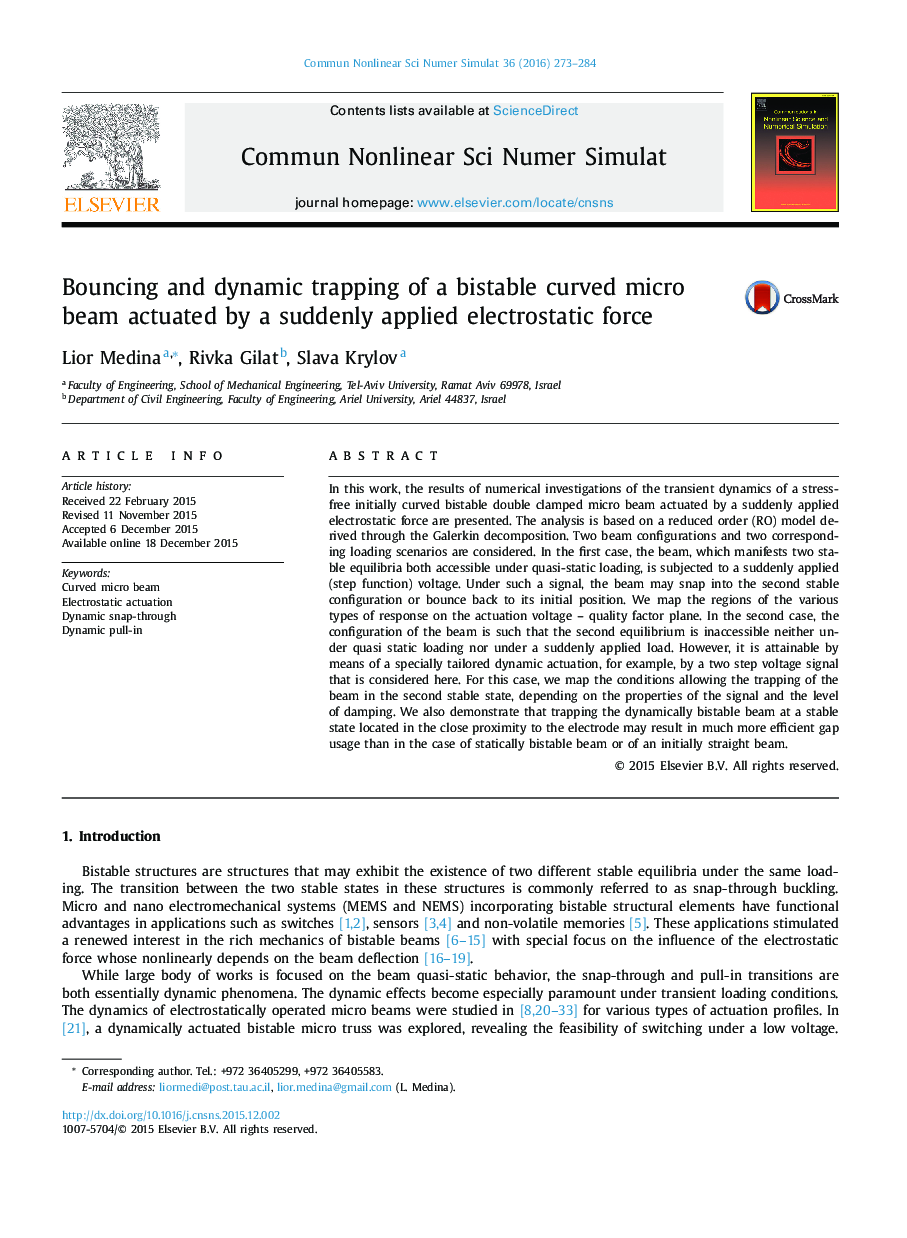| کد مقاله | کد نشریه | سال انتشار | مقاله انگلیسی | نسخه تمام متن |
|---|---|---|---|---|
| 766510 | 1462609 | 2016 | 12 صفحه PDF | دانلود رایگان |
• Numerical investigations of the dynamics of a bistable beam actuated by a suddenly applied electrostatic load are presented.
• Two beam configurations and two corresponding loading scenarios are considered.
• We map the conditions allowing a dynamic snap-through depending on the properties of the loading and the level of damping.
• A loading scenario enabling the trapping of a beam at a statically inaccessible stable state is specified and characterized.
In this work, the results of numerical investigations of the transient dynamics of a stress-free initially curved bistable double clamped micro beam actuated by a suddenly applied electrostatic force are presented. The analysis is based on a reduced order (RO) model derived through the Galerkin decomposition. Two beam configurations and two corresponding loading scenarios are considered. In the first case, the beam, which manifests two stable equilibria both accessible under quasi-static loading, is subjected to a suddenly applied (step function) voltage. Under such a signal, the beam may snap into the second stable configuration or bounce back to its initial position. We map the regions of the various types of response on the actuation voltage – quality factor plane. In the second case, the configuration of the beam is such that the second equilibrium is inaccessible neither under quasi static loading nor under a suddenly applied load. However, it is attainable by means of a specially tailored dynamic actuation, for example, by a two step voltage signal that is considered here. For this case, we map the conditions allowing the trapping of the beam in the second stable state, depending on the properties of the signal and the level of damping. We also demonstrate that trapping the dynamically bistable beam at a stable state located in the close proximity to the electrode may result in much more efficient gap usage than in the case of statically bistable beam or of an initially straight beam.
Journal: Communications in Nonlinear Science and Numerical Simulation - Volume 36, July 2016, Pages 273–284
